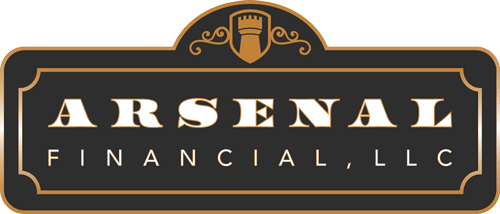Buying a home these days can feel a bit like navigating through a maze while blindfolded. With inflation & mortgage rates higher than we’ve become accustomed to and housing prices that seem to only grind higher, it can be hard to know which way to turn. So, let’s dive into how higher inflation is affecting mortgage rates, take a trip down memory lane to the 70s and 80s, and see what lessons we can glean for today’s perplexing housing market.
Flashback: High Inflation & Interest Rates in the 70s and 80s
First, let’s rewind to the 1970s and 1980s, when disco was king, bell-bottoms were in, and inflation ran rampant. Imagine living in an economy where prices for groceries increased (on average) nearly 8% a year for a decade!
In 1973, inflation was already at 8.7% and averaged 9.2% over the next nine years. This was much higher than the average inflation rate of 3.3% from 1946 to 1972 and 2.7% from 1982 to 2019. By 1980, inflation had reached over 14% before eventually declining to 3.5% in the second half of the 1980s.
To combat this economic situation, the Federal Reserve increased interest rates with the hopes of cooling off inflation. At one point in the early 80s, mortgage rates were a jaw-dropping 18%!!! Home prices more than doubled from 1973 to 1982 and those buyers who could secure a mortgage were often locked into staggering monthly payments.
By the time this period wound down, the average cost of a house was over 5 times the average salary. Maybe as you read this – you see some of the similarities to our last 10 years.
Fast Forward to Today: A New Set of Challenges
Jumping back to the present, the housing market is facing a new kind of challenge. Over the past decade, we enjoyed historically low mortgage rates, keeping monthly housing costs relatively affordable. For a decade, many borrowers were actually able to reduce their monthly mortgage payments. But then came the COVID-19 pandemic, which turned the global economy upside down. Supply chain issues, massive government spending, and shifts in consumer behavior led to a resurgence of inflation, peaking around 8% in 2022.
Once again, the Fed has increased interest rates to tame the spike, albeit not to the extremes of the 80s. Reaching a height of 8% per year, we have seen inflation slowly declining down to almost 3%, but we aren’t in the clear yet as the Federal Reserve works towards nearing a 2% inflation target mark before we start to see any relief in interest rate levels.
In the meantime – who wants to move and borrow at near 7% when an existing mortgage is locked at 2.5%?
The Housing Market: High Prices and Low Inventory
Here’s where things get tricky. Despite higher mortgage rates, which theoretically should cool down the housing market, home prices are still climbing. Why? It’s a classic case of supply and demand mixed with a cup full of pandemic aftermath.
There just aren’t enough homes to go around. Builders are grappling with numerous challenges, such as skyrocketing costs for materials, labor shortages, and supply chain disruptions. As mentioned before, many existing homeowners are reluctant to sell, partly due to those low rates on existing mortgages and the fear of not finding a new home in such a competitive market. This reluctance keeps inventory low and exacerbates the supply crunch.
High demand combined with low supply means prices keep going up, even when borrowing becomes more expensive. It’s a frustrating paradox for potential buyers. The result is a market where buyers feel squeezed from both sides – higher mortgage payments and soaring home prices. The situation is further complicated by demographic shifts, with millennials, the largest generation, entering their prime homebuying years and significantly increasing demand. On top of this, remote work trends have led to a migration from urban centers to suburban and rural areas, putting additional pressure on housing markets in these regions.
Had enough yet? Well – there’s more…
In the last decade, institutional investors and private equity firms have increasingly snapped up residential properties, often paying in cash and outbidding individual buyers. This reduces the already limited supply of homes available to average buyers, pushing prices even higher. The combined effect of these factors creates a perfect storm where the traditional dynamics of higher rates leading to lower prices simply do not apply.
The Dilemma for Homebuyers: To Buy or Not to Buy?
So, what’s a prospective homebuyer to do? With mortgage rates higher than in the past decade, your dollar doesn’t stretch as far. A house you could have afforded a few years ago might now be out of reach. It’s a classic catch-22: wait for rates to come down and risk prices going up, or buy now and lock in higher payments.
Waiting for the perfect moment can be risky in any financial decision, and often comes at a price. Home values might continue to rise, interest rates might not drop as expected, and the cost of waiting can be substantial. You lose out on building equity and might face rising rental costs in the meantime, further straining your finances.
Does this mean you should run out and buy the first house you come across or try to hunt down a home when you aren’t even in the market? No – but it does mean that if the opportunity arises and the only thing stopping you is holding out for a better hand, you may want to consider the long-term consequences.
You may be asking yourself what you’re supposed to do if you simply have not had a reasonable opportunity cross your path. The short answer: prepare.
Planning Amid Uncertainty: Your Path Forward
There may not be a “For Sale” sign in front of your dream home at a price that won’t break your budget at the moment, but if you don’t start being proactive now, you won’t have the means to pull the trigger when the time comes. Even in these challenging times, strategic planning and financial discipline can make a difference. Focus on what you can control and plan accordingly:
- Budget Like a Boss: Understand your financial limits and stick to them. Account for all homeownership costs, including taxes, insurance, and maintenance.
- Save Aggressively: The more you save for a down payment, the less you need to borrow. This can help offset higher interest rates.
- Explore Your Options: Consider all different mortgage products out there. Talking to a financial advisor, or just a little bit of research, can quickly broaden your options.
- Stay Informed: Keep an eye on economic indicators and Federal Reserve policies. Knowledge is power and can help you make informed decisions.
- Lean on Experts: Real estate agents, mortgage brokers, and financial advisors can provide valuable insights and help you navigate the complexities of the housing market.
Conclusion: Balancing Act in a Turbulent Market
Inflation and its impact on mortgage rates present significant challenges for today’s homebuyers, reminiscent of the economic conditions of the 1970s and 1980s. However, with careful planning and a focus on financial discipline, it is possible to navigate these turbulent waters. The key is to balance the immediate costs against long-term benefits, avoiding the pitfalls of waiting too long in an unpredictable market. While there is no crystal ball for the economy, strategic planning, informed decision-making, and not letting the rates drive your decision can position you for success when the opportunity arises.
Remember, the journey to homeownership is a marathon, not a sprint. Stay focused, stay disciplined, and stay informed. By doing so, you’ll be better prepared to seize opportunities and achieve your dream of owning a home, even in the face of economic challenges.

